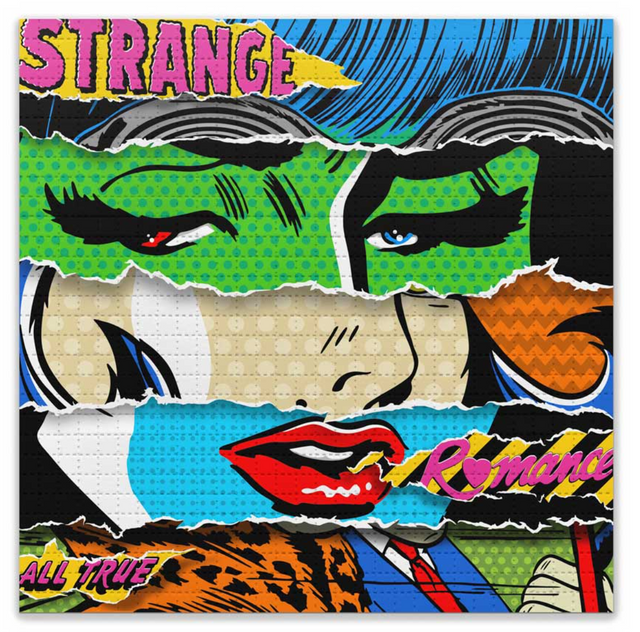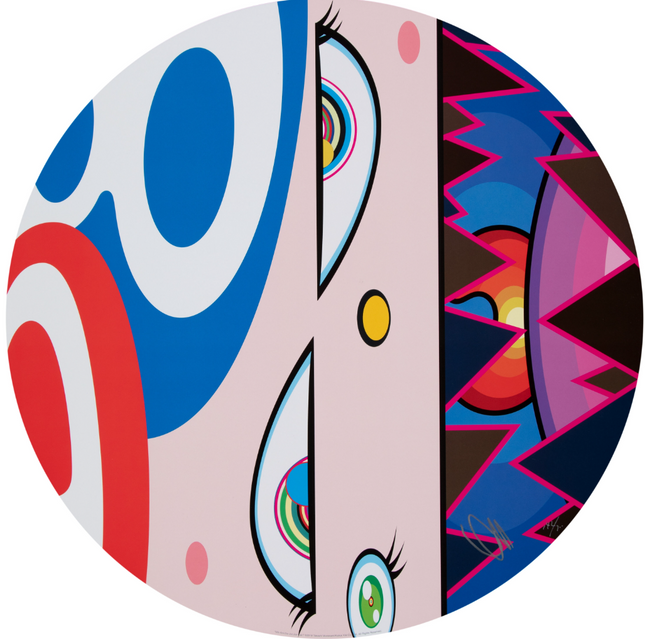
Face & Head

Takashi Murakami TM/KK We Are the Jocular Clan Offset Lithograph Print by Takashi Murakami TM/KK
We Are the Jocular Clan Offset Lithograph Print by Takashi Murakami TM/KK Print on Smooth Wove Fine Art Paper Limited Edition Hand-Pulled Street Pop Artwork Graffiti. 2018 Signed & Numbered Limited Edition of 300 Offset Lithograph Artwork Print Size 19.63x19.63 Kaikai Kiki Co. Ltd., Tokyo. Decoding the Visual Symphony of Takashi Murakami's "We Are the Jocular Clan" The fusion of contemporary art and street culture is magnificently encapsulated in Takashi Murakami's offset lithograph print, "We Are the Jocular Clan." This limited edition piece, hand-pulled on smooth-wove fine art paper, is a quintessential example of street pop and graffiti artwork. Murakami, a stalwart in the post-modern art scene, is renowned for blurring the boundaries between high and low culture, a theme that resonates deeply in this 2018 creation. The artwork, signed and numbered, comprises a limited series of 300 prints, each sized at 19.63x19.63 inches, and presents a visual narrative that is both playful and profound. Takashi Murakami's Artistic Legacy and Street Pop Artistry Murakami's aesthetic, often categorized under the Superflat movement, indicates his deep engagement with the historical and contemporary visual language. "We Are the Jocular Clan" showcases Murakami's iconic design elements, such as the smiling flowers and whimsical eyes, that have become synonymous with his name. These motifs are not just recurring visual themes but are also imbued with cultural significance, drawing from Japanese art traditions and the global impact of anime and manga. The juxtaposition of traditional Japanese art with the anarchic energy of street art and graffiti forms a complex, layered tapestry of meanings that challenge the viewer's perception of art, culture, and society. Materiality and Craftsmanship in Murakami's Printmaking The craftsmanship in producing "We Are the Jocular Clan" is a testament to the meticulous processes behind fine art printmaking. The decision to use offset lithography is a nod to the democratization of art, a principle often celebrated in street pop art. This method allows for a wider dissemination of Murakami's work, making it accessible to a broader audience and not just the echelons of art collectors. The smooth-wove fine art paper is a canvas that captures the original artwork's vibrant colors and intricate details, ensuring that each piece, though part of a series, retains a sense of uniqueness and individuality. Cultural Dialogue Through Murakami's Visual Language "We Are the Jocular Clan" is not merely an object of visual delight but a cultural dialogue articulated through Murakami's distinct visual language. The piece embodies the essence of street pop art — it is accessible yet complex, severe yet playful, and individual yet universal. Murakami's work bridges the street and the gallery, inviting interpretations across diverse cultural and social contexts. It reflects the artist's philosophical inquiries into the nature of joy, the constructs of clan-like communities, and the role of art as a communal experience. In contemporary art, Murakami's work has consistently pushed the boundaries of what is considered art, just as graffiti once pushed against the boundaries of legality and acceptance in public spaces. "We Are the Jocular Clan" holds within its vibrant composition the revolutionary spirit of street art, the aesthetic pleasures of pop art, and the conceptual depth of contemporary art practices. Much like Murakami's oeuvre, this artwork catalyzes the ongoing discourse about the intersections and divergences within art forms and the evolving narrative of street pop art and graffiti artwork.
$2,500.00


